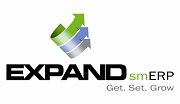How Does ERP Help In Manufacturing Industry? 2025 Guide of ERP Software
Do you know the benefits of ERP for manufacturing industry? Integrating advanced technologies helps you set yourself apart from competitors and maximise operational efficiency. In this blog, we will help answer the question, "How does ERP help in manufacturing?" and help you understand how the top ERP software in Kolkata can be a total game-changer for manufacturers:
Enterprise Resource Planning (ERP) systems are known for their advanced features where they bring various business operations into one cohesive platform. This integration gives you a better look at all the processes going on in your organisation. It includes various operations from different departments, like inventory management, sales, production planning, and finance.
With the right ERP for production, you can establish better coordination and collaboration among different departments. This will help you to improve workflow processes and gain a clearer visibility over processes in the supply chain management. Let's take a look at how ERP supports the manufacturing industry:
How Does ERP Help Manufacturers?
What is ERP Software for Manufacturing Industry?
ERP systems for the manufacturing industry have simplified workflow processes for manufacturers to a great extent. It helps to manage processes like procurement of raw materials, quality control, sales order management, and inventory management. If you want a solution that not only reduces the overall cost of your operations, but also reduces inventory business processes together, ERP software would be an ideal choice for your business.
With features like real-time insights and data analysis, you can make key business decisions quickly. Manufacturing ERP systems make everything easier—from planning and production to shipping out the final products. Using this software helps consolidate different operations on one platform, which boosts teamwork, cuts costs, and allows you to manage your resources better.
How Does ERP Software Help Manufacturers In Manufacturing Industry?
The Key Modules of Manufacturing ERP System
Let's find out how ERP solutions for manufacturing can help you implement the best practices for your business:
1. Manufacturing Execution System (MES)
ERP system includes MES modules that help manage and monitor work in the process of manufacturing. This ensures production schedule alignment and the reduction of delays in business processes. If you are already using a MES system, you can integrate it with a cloud-based ERP.
2. Material Requirements Planning (MRP)
MRP enables your company to create a production plan for the final manufactured goods. Each material is available at the right time, which helps to reduce stockouts and overstocking of products. Therefore, it prevents production delays.
3. Inventory Management
This module allows you to track inventory levels in real time. Implementing an ERP solution for your manufacturing organisation enables you to streamline operations of inventory management by gaining more visibility over different processes and accurate demand forecasting.
4. Sales Order Management
ERP systems for manufacturing enterprises help your business by automating order processes, ensuring accurate order fulfillment, and efficiently tracking order processes. This helps you to improve productivity and increase efficiency in sales order management.
5. Procurement of Materials
The entire lifecycle of a product begins from the procurement of materials. Cloud ERP platforms help automate the procurement process and ensure the timely purchase of raw materials.
6. Financial Management
ERP software for manufacturers comes with a financial management module that handles cost accounting, bank reconciliation, and financial reporting. This helps you get clear and timely financial insights.
The Benefits of ERP for Manufacturing Companies
The benefits of manufacturing ERP are numerous. The manufacturing sector has to deal with hectic schedules every day, which is why it requires a system that can help streamline production schedules. The benefits of implementing an ERP system are as follows:
1. Centralised Data and Processes
ERP for manufacturing companies keeps all important business data in one platform. You can easily get info from different departments all in one software, which means you can access real-time updates without any hassle. This also makes it easier for departments to work together.
2. Improved Efficiency and Productivity
The ERP system automation features help manufacturers save time by cutting down on tedious manual labour. By automating tasks, you reduce mistakes and help production schedules to run smoother.
3. Enhanced Visibility and Control
Manufacturing ERP systems enhance visibility in operations. Having access to real-time data enables your company to have more control over operations and helps you to make decisions on time.
4. Better Supply Chain Management
The supply chain becomes more visible, thereby minimising production cycle delays and guaranteeing on-time delivery of finished goods with the help of ERP systems. Improved supply chain management translates directly into higher customer satisfaction.
5. Improved Financial Management
ERP software makes handling finances easier by automating things like payroll and bills. This reduces errors and keeps everything more accurate.
6. Enhanced Customer Service
With better inventory management and order management, ERP applications help manufacturers meet customer demands and enhance customer experience.
Conclusion
ERP systems are really important for making your manufacturing business run better. Manufacturing ERP software brings all the key operations of your business together in one place, helping you to simplify your processes and make smarter decisions.



